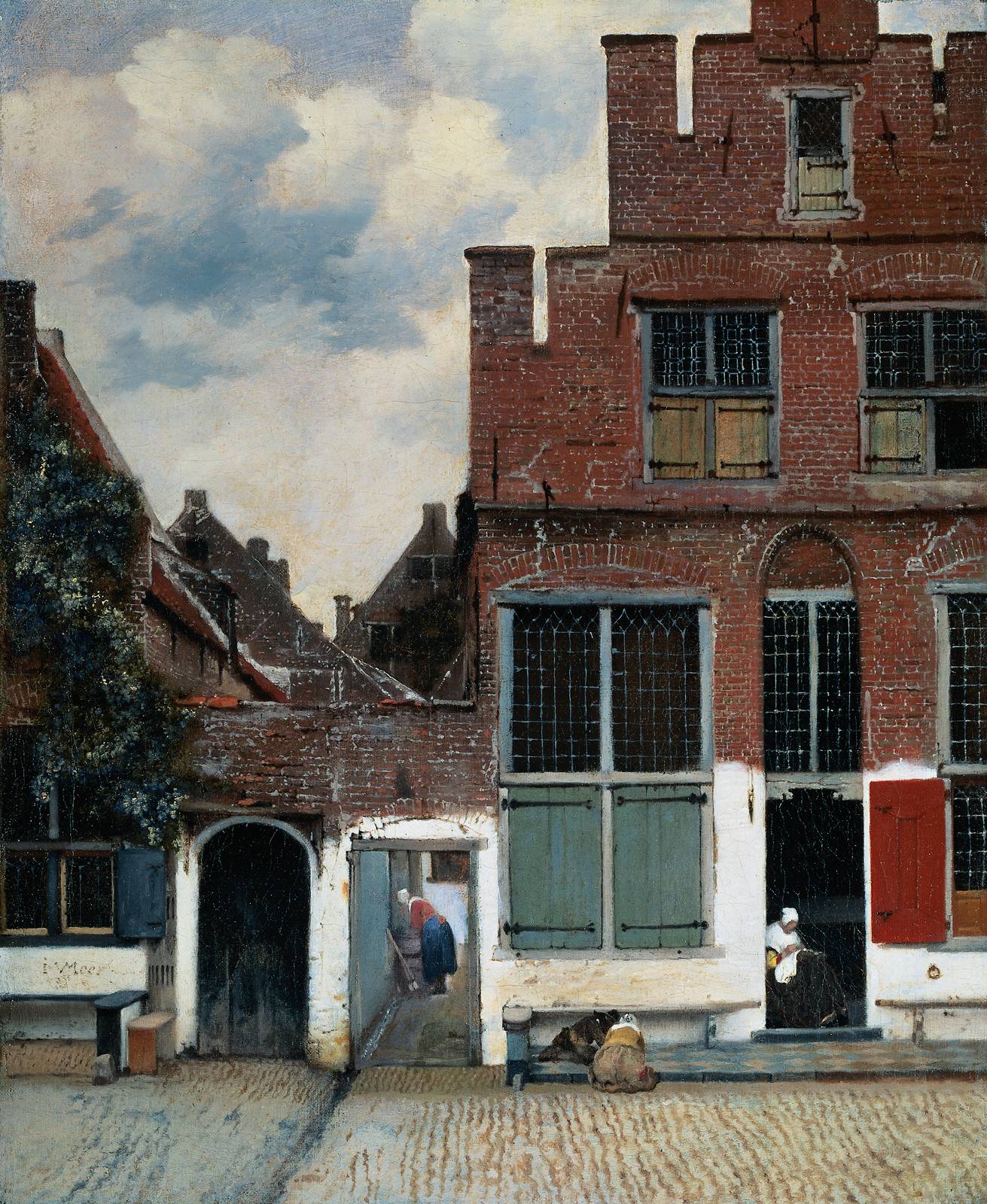
Kees Kaldenbach, Autor.
Herausgegeben 1/ 2002 in: Die Denkmalpflege, 60. Jahrgang. Wissenschaftliche Zeitschrift der Vereinigung der Landesdenkmalpfleger in der Bundesrepublik Deutschland.
Stichwoerter: Johannes Vermeer, Jan Vermeer, Delft, Holland, Untersuechung, Baugeschichte, Wo war Die kleine Strasse ?

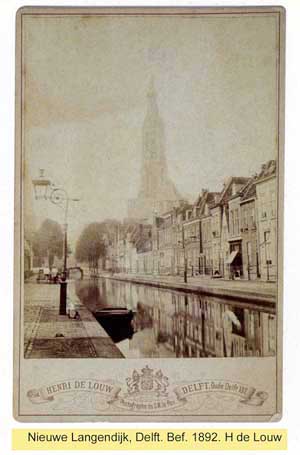

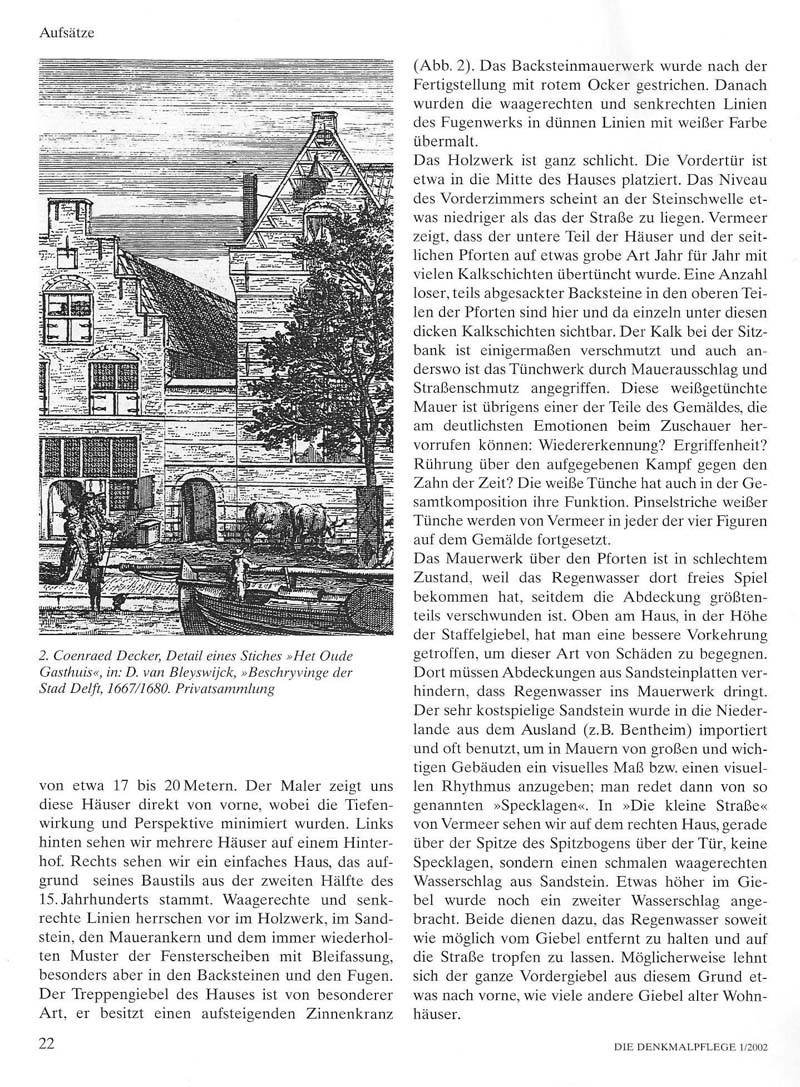
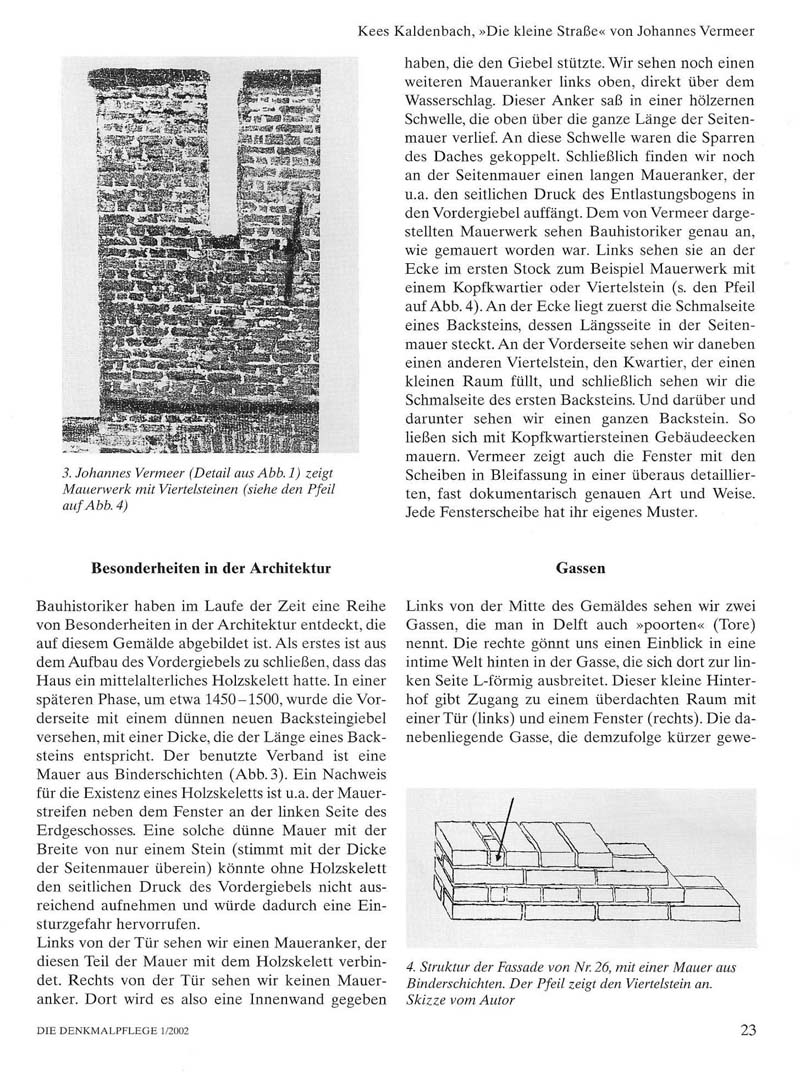
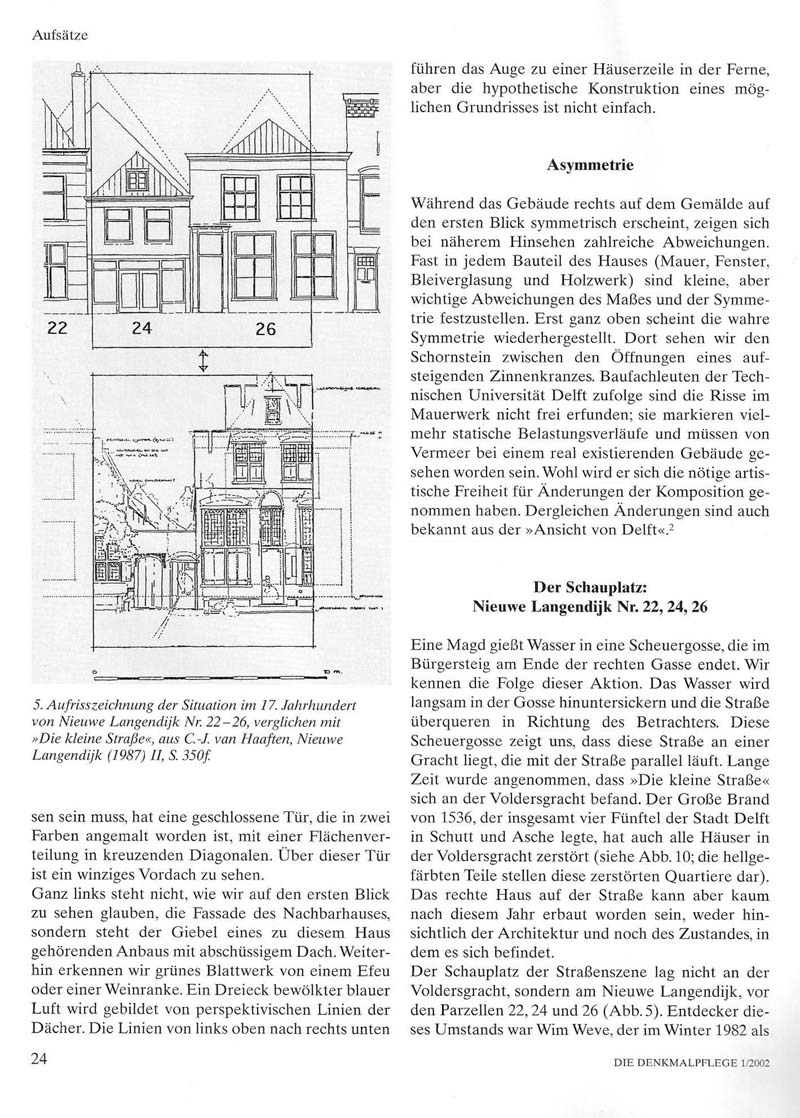
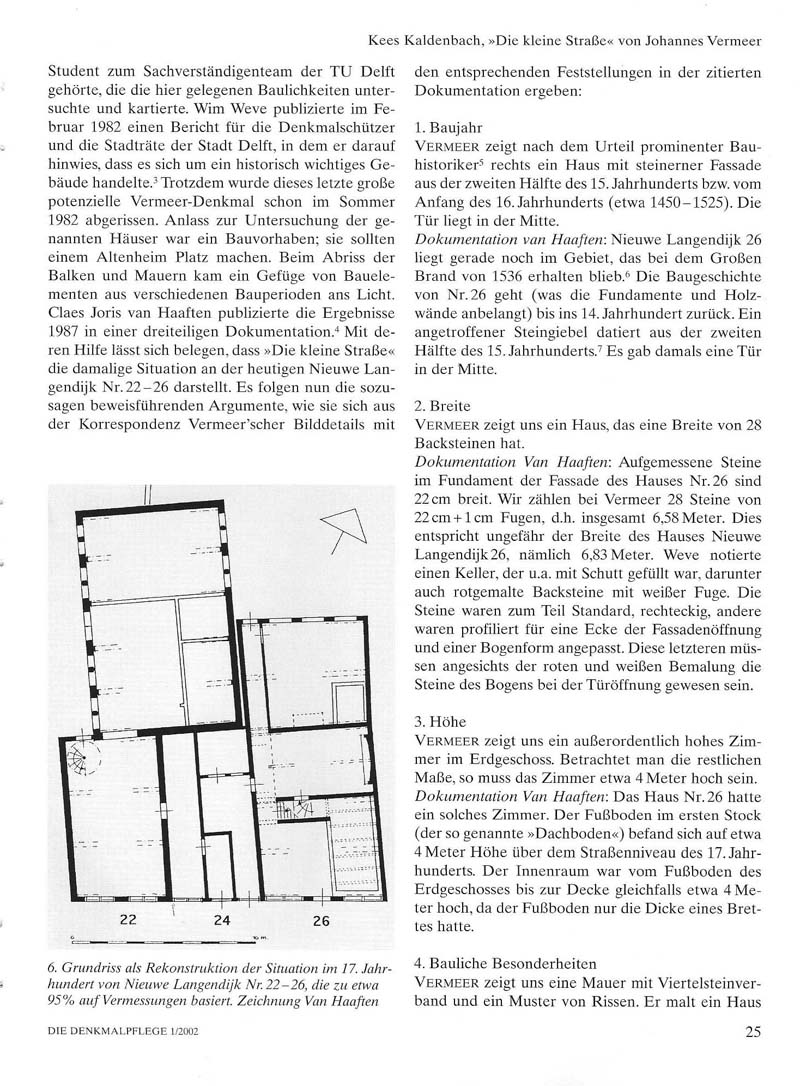
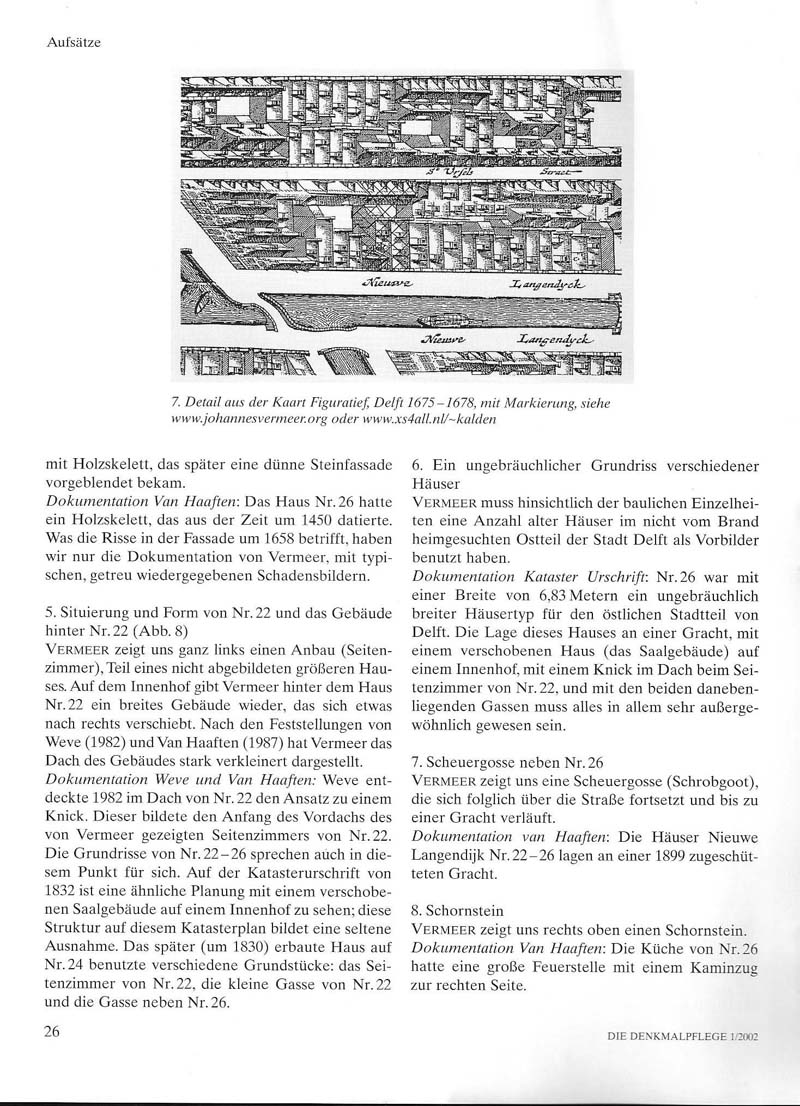
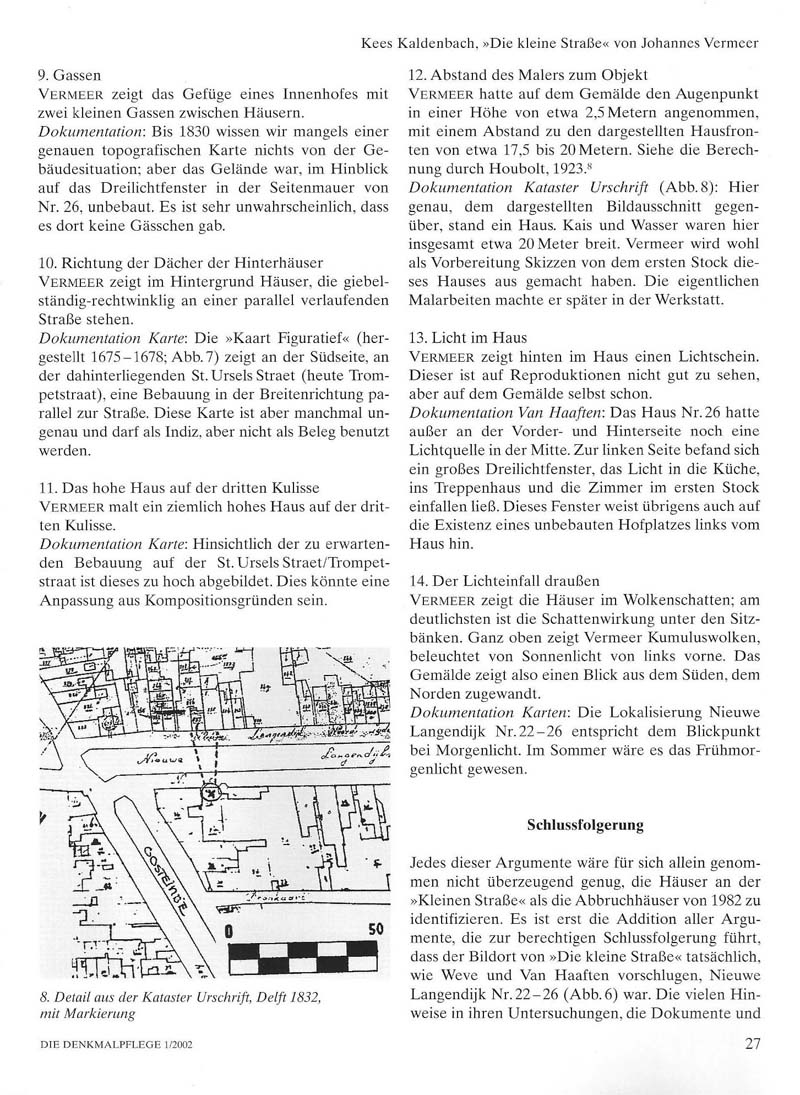
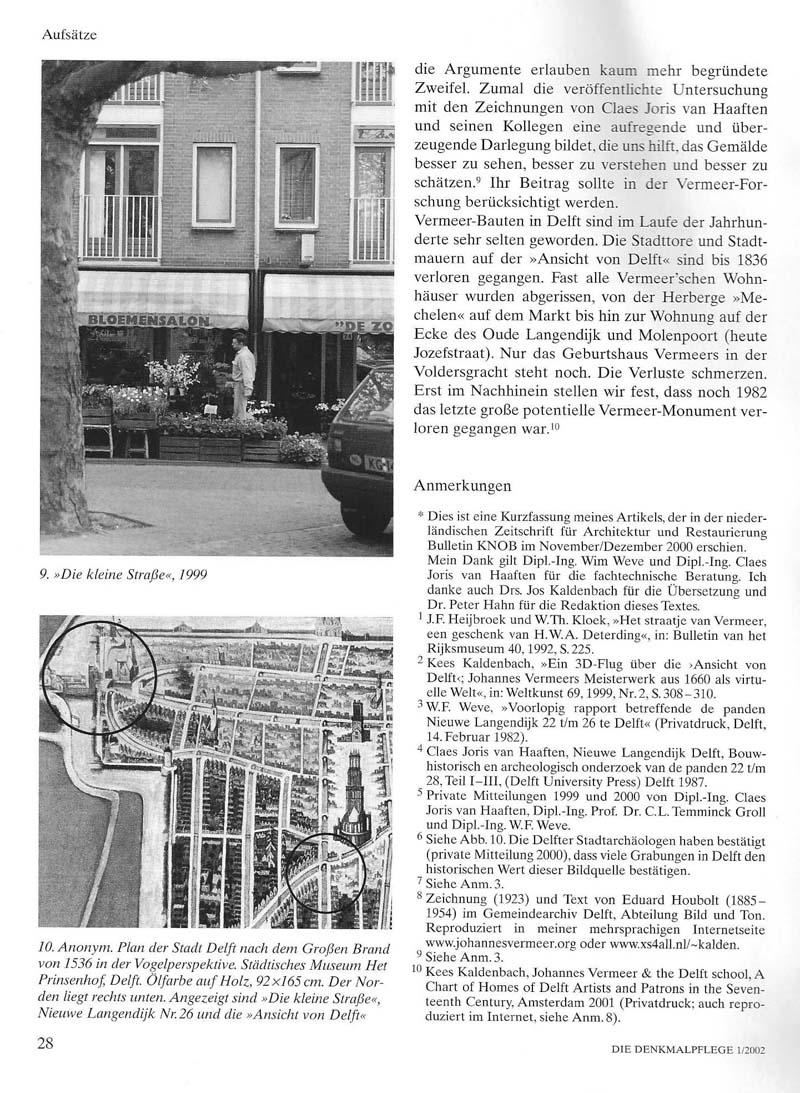

Uebersetzung auf Englisch:
====== PRESS RELEASE, DECEMBER 8, 2000 ======
The precise site of the painting 'Little Street' by the Delft artist Johannes Vermeer was located in Delft on Nieuwe Langendijk 22-26. The historic buildings which once stood there were first identified and then completely demolished in 1982. This news has been revealed by Dutch art historian Kees Kaldenbach in the latest issue of the of the Royal Dutch Antiquities Magazine (Bulletin KNOB) which is being presented mid-december 2000.
In 1982 a group of houses on Nieuwe Langendijk 22-26 was the subject of research by a team from the Delft Polytechnic University, assisted by a number of amateur archaeologists. This research occurred shortly before demolition as the houses in question seemed an interesting subject. The group of buildings seemed to date form the sixteenth century or even earlier. One structure in this group, located in the back of these houses, was an uncommonly large building which was out of alignment in relationship to houses along the street.
In the course of this research Wim Weve, active in 1982 as an assistant in the Architecture department of the Delft Polytechnic, realized that the houses on this location were similar to those depicted by Vermeer to such a degree that identification was possible. His "Provisional Report" was published on February 14, 1982, before actual demolition had begun. As his findings had been reported as a private individual and as his report was only distributed in limited circles, his written and oral warnings were ignored by the real estate owner, by the City Magistrates and by the National Bureau of Monuments (Rijksdienst voor de Monumentenzorg). A permit for demolition had already been granted to make space for the building of an old age home on the site. At the time Weve's remarks were also considered "too vague" and unsupported by solid research evidence.
Initially this research on Nieuwe Langendijk 22-26 was architectural-historic in nature, but after the building had disappeared it became purely archeological later on in June and July. Carried out by a team which was supervised by student assistant Claes-Joris van Haaften, research lasted until August 1982. Results were presented by Van Haaften in 1987 when his three volume book which was published by Delft University Press. The extremely detailed research results served as a handbook for students of architectural restoration. The total body of evidence led Van Haaften to support the initial identification as the houses painted by Vermeer. However, Weve's and Van Haaften's publications remained largely unread by historians and art historians and thus remained virtually unknown.
Vermeer specialist and art historian Drs. Kees Kaldenbach, who has recently published the exact dating of the scene in Vermeer's "View of Delft " to a precision of half a month, has done further research on the "Little Street" based on the data provided by Weve and Van Haaften. He communicated with Professor Dr. Ir. C.L. Temminck Groll, emeritus professor of Architectural Restoration at Delft Polytechnic, and well as with both Weve and Van Haaften. The latter two are both currently working as architectural historians in the Dutch towns of Delft and Groningen. In his cover article in Bulletin KNOB Kaldenbach presents all relevant data, and combines and weighs all indications. He lists a total of 14 arguments to support the identification, including:
- the dating of these houses spared during the Great Fire of 1536 which ravaged 4/5 of Delft;
- the height and width, plan, elevation and other architectural characteristics of the houses on Oude Langendijk 22-26;
- the scrubbing gutter, only visible on Vermeer's painting, which proves its location on a canal;
- the distance between painter and subject;
- the play of light within and outside the building nr. 26 (which is the house on the right hand side on Vermeer's painting).
In the conclusion to his article Kaldenbach writes:
"Taken individually, each of the arguments presented above would be inconclusive in identifying the architecture of Nieuwe Langendijk 22-26 as that shown by Vermeer. However, considering the body of indications it has now become almost certain that Weve's tentative conclusions and Van Haaften's solid body of data concerning the location for The Little Street are indeed valid. Their studies enables us to broaden our understanding and appreciation of Vermeer's painting. Cumulatively these concrete indications yield a tapestry of evidence which scarcely contains any margin of error."
======= END OF PRESS STATEMENT ====
Taken individually, each of the arguments presented above would be inconclusive in identifying the architecture of Nieuwe Langendijk 22-26 as that shown by Vermeer. However, considering this body of indications it has now become almost certain that Weve's tentative conclusions and Van Haaften's solid body of data concerning the location for The Little Street are indeed valid. Their studies enables us to broaden our understanding and appreciation of this Vermeer painting. Cumulatively these concrete indications yield a tapestry of evidence which scarcely contains any margin of error.
Research by Claes Joris van Haaften and the drawings presented by him and his colleagues form an exciting and convincing argument. It helps us to upgrade the way in which we see, understand and value Vermeer's painting. Their research should be properly acknowledged.
The other side of the medal is that Vermeer monuments have become exceedingly scarce in Delft in the course of the last century. The city gates and walls on Vermeer's The View of Delft were demolished in the nineteenth century. Vermeer's homes were demolished, from Mechelen on Market square to the house on Oude Langendijk, stretching all the way into Molenpoort (now Jozefstraat) in which he painted most of his masterworks. Only his birth house, now an unmarked shoe store, still stands on Voldersgracht.
This is a painful loss. With hindsight we must conclude that as recently as 1982 the city fathers of Delft allowed the demolition of its last potentially great Vermeer monument.
In this essay a detailed description of a townscape painting by Vermeer has been presented. Ample indications support of the identification of the exact location of The Little Street that Weve and Van Haaften identified in 1982. My analysis supports and amplifies their hitherto overlooked findings. Until now, this painting has been seen as an attractive view of a seventeenth-century street. Our knowledge that The Little Street represents actual buildings on a Delft canal helps to deepen our understanding and appreciation of this seemingly unassuming painting.
Email me at kalden@xs4all.nl
Text translated from the Dutch as published in Bulletin KNOB, November-December 2000.
Text copyright drs Kees Kaldenbach, 2000. Launched 8 December 2000. Last update April 21, 2007.
Art histoy information trickles down slowly. In 2001 the Rijksmuseum published the book Netherlandish Art 1600-1700. The text on The Little Street (p. 204) contains a text written by Guido Jansen: "...there is no reason to expect Vermeer's Little Street to be topographically accurate. That is why no one has yet come up with a convincing identification of the houses."
Postscript 2 .
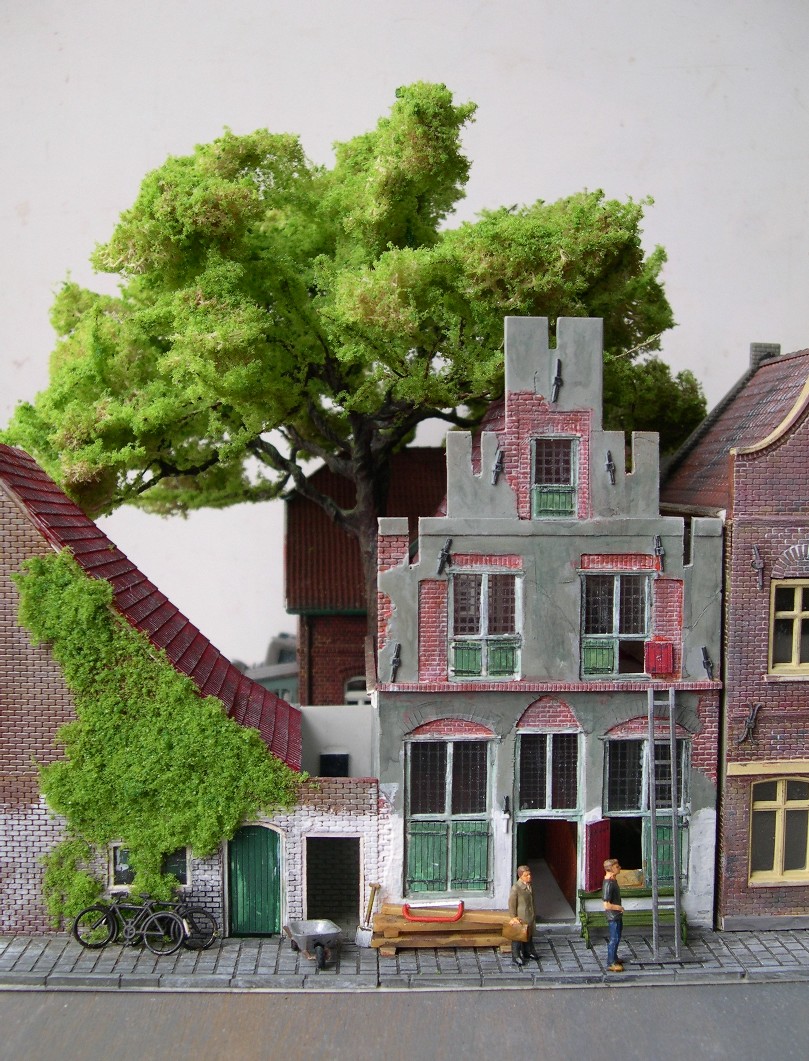
This reconstruction was made by Thonis van der Weel. It shows an imaginary situation in about 1980 in removing the plaster from the facade. I wish it had happened back then! Explanation in Dutch on his web site.